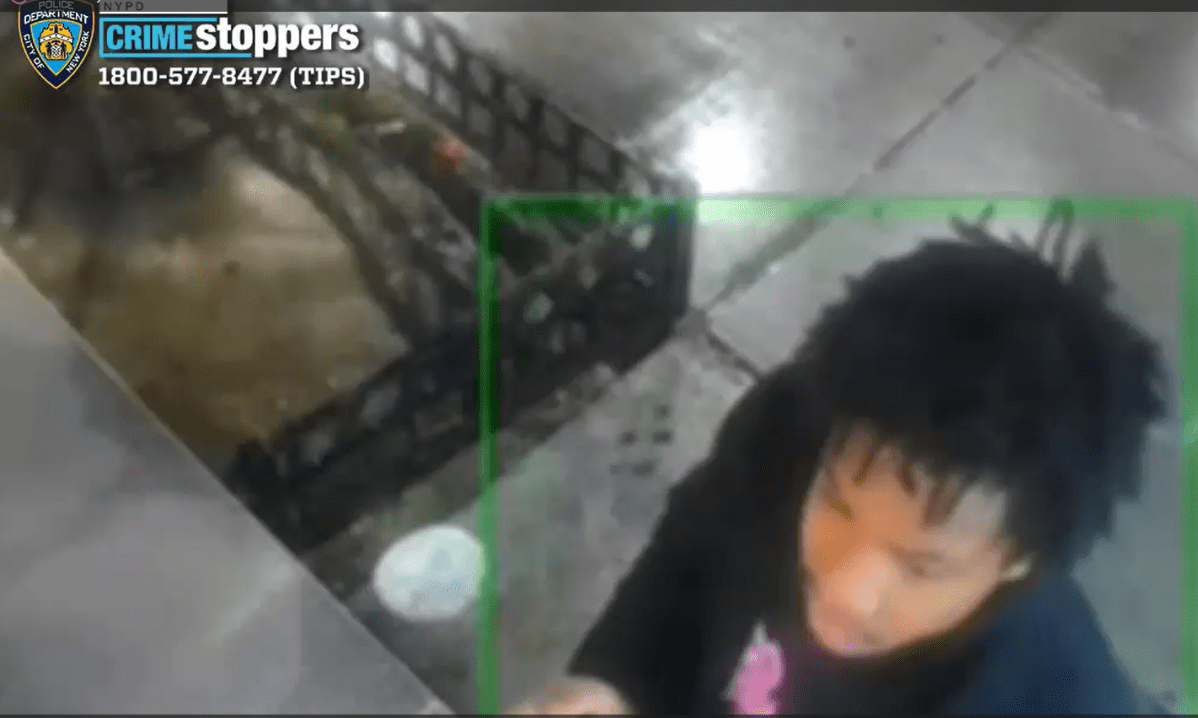By Sarah Norris
As an engaging exploration of Americans’ emotionally fraught relationship to food, “Milk ’n’ Honey” is a resounding triumph, not least of all due to the constant presence of “the Eater.” The first character to set foot on a stage crowded with rolling shelves of pre-packaged edibles, the Eater (Jake Manabat) seats himself in the corner, at a round table laden with white tablecloth, silverware, stemware, and a veritable feast of savories and sweets. He unfolds his napkin and takes his first bite; just like that, the show has begun. For the duration of the play, the Eater does exactly what his name suggests, in addition to watching — the action, the audience, and his food — and his blinking expressionless stare has the unnerving effect of blurring the third wall.
Composed of several linear plotlines and some comical musical non-sequitors, “Milk ’n’ Honey” is thought provoking but, thankfully, largely free of pedantic lectures. Of the many questions raised in this collaborative play, one of the most astute is this: Where food is concerned, where does one draw the line between sustenance and entertainment?
The meat of the script, so to speak, lies in the scenes that reflect the relatable experiences of day-to-day living and eating in the United States, and was culled from dozens of interviews with people across the country: migrant workers, farmers, and waiters, to name a few. In the land of milk and honey, laments Jesus (Vaneik Echeverria), an illegal Mexican immigrant working on a farm, “Americans eat so much you can never pick enough!” He and his cousin sleep in a cave “like little potatoes” beneath the earth’s surface, for fear of being deported, existing in a state of exhausted desperation.
The strengths of the ensemble cast are particularly exemplified by the physicality and energy of Signe V. Harriday and Aysan Çelik. The former plays a character named Renee, whose first lines sing the praises of a cellophane-wrapped Honey Bun. “It’s two for a dollar, and about as big as my foot, you can’t get a better deal than that.” She describes her first taste, as a little girl whose mom imparted a sweet gift: a Honey Bun for her honeybun. After revealing that her mom is now deceased, and that her father leaves the treats around the house for her, she licks the frosting and declares it tastes “like love.” Then, after taking a big bite, she asks, “Is there even any honey in this?”
Among the multiple characters portrayed by Çelik, one of them is the no-nonsense doctor (dressed in scrubs printed with colorful Blow Pop logos) who diagnoses Renee as a diabetic. She comes across with the perfect cross of detachment and scorn, insensitively tossing out the threat of amputated legs before clipping out of the room.
Fred (Shawn Fagan), a flavor chemist, uses a slideshow of chemical formulas and gauzy photographs to demonstrate the correlation between olfactory senses and memory, adding more heft to Renee’s earlier musings on the emotional resonance of Honey Buns. In trying to capture the exact flavor of a jellyfish, the scientist loses his ability to taste, which sends him spiraling into paroxysms of panic. Finally, after being stung by the sea creature, he’s jolted back into the game with a manic energy.
A musical number that has all of the characters dressed up as corn, and singing and doing high-kicks as they belt out the products containing corn is hilarious and informative. Who knew corn was a component of both batteries and disposable diapers?
An off-note is a short riff on chefs, which attempts to mock their title. Barked lines such as “If you work in a restaurant, you’re an idiot” neither add momentum to the play, nor impart anything other than unfounded hostility.
The high note of the show is a return to Renee, following her messy and unsuccessful foray into diabetes management. After complaining that everything now tastes like ash, and angering her father with this new healthy cooking (though she failed to share with him her diagnosis), she caves. Stripping down to her underwear, Renee stands on a blanket while another character pours a pitcher of honey over her head. At first, she is in a state of bliss, and her near-nakedness draws parallels to a return to an in utero connection to her mother, but she is soon trapped as the honey covers her face and body in a sticky, impenetrable armor.
If we are what we eat, one can’t help but conclude as the Eater digs into yet another piece of cake, it’s worth considering what it is we’re actually craving.
The house lights go up just in time to illuminate the audience’s newly considered guilt about attachment to that one, hard to find brand of imported blue cheese dressing or their regular rudeness to a grocery store clerk. But before anyone skulks home to eat their pillow, consider the cupcakes! Following each performance the stage turns into an “After Show Café” offering complimentary locally made food and coffee, including cupcakes made by the Lower East Side Girls Club. The audience is invited to converge around a table displaying fliers for various non-profits and initiatives that support fair-trade and professionals in the culinary business. Special events that change nightly range from a presentation on hunger by an Oxfam organization of NYU students, to an interview of “Fast Food Nation” author Eric Schlosser (Nov. 11). Last Friday featured Martha Ma, a community chef at Just Food, doing a cooking demonstration of kale, for which people set down their frosted desserts and waited in line, inspired, all at once, to eat their fresh vegetables.
































